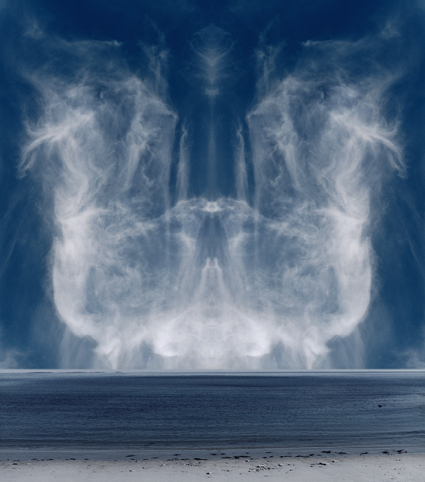Workshop Giveaways Lowepro – Fall Foliage
Jack and Ellen were the winners of our Fall Foliage Workshop giveaway – Camera bags, generously donated by Lowepro.
Jack and Ellen were the winners of our Fall Foliage Workshop giveaway – Camera bags, generously donated by Lowepro.
.
The following key commands do not require clicking on the mask.
X reverses Foreground and Background colors
Numbers number keys change the Opacity of a brush
[ and ] makes a brush smaller and larger
Shift [ and Shift ] makes a brush softer and harder
Opt Delete fills a mask with the Foreground color
Command I inverts a mask
The following key commands require clicking on the mask.
Control Click displays mask options
Opt Click displays a mask in black and white
Shift Opt Click displays a mask as a red overlay
Command Click loads the mask as a selection
Shift Command Click adds the mask to a selection
Option Command Click subtracts the mask from a selection
Shift Option Command loads the intersection of two masks
Shift Command I inverses a selection
Drag & drop to move a mask from one layer to another
Option drag & drop to copy a mask from one layer to another
Read more about Selections & Masks.
Learn more in my digital photography and digital printing workshops.
In this Photoshop Quick Tip I demonstrate all the masking key commands in Photoshop. They’re real time savers!
View more Quick Tips here.
Learn more in my digital photography and digital printing workshops.
.
In this Photoshop Quick Tip I show how and why to make two masks for one layer.
Read more about Selections & Masks.
Learn more in my digital photography and digital printing workshops.
.
In this Photoshop Quick Tip I show when and how I feather selections for maximum control.
Read more about Selections & Masks.
Learn more in my digital photography and digital printing workshops.
“He experiments in a darkroom. She composes on a computer screen. Together, husband-and-wife artists Jerry Uelsmann and Maggie Taylor create haunting, layered dreamscapes that push the boundaries of photography’s possibilities. This documentary from lynda.com explores both the technical and emotional aspects of Jerry’s and Maggie’s work, from the composition to the criticism, with insight from other preeminent voices in photography.”
Find out more about this 1.5 hour documentary at Lynda.com.

Our bodies, the vessels that carry us through life, are miracles of engineering to be marveled at and provide us gateways to both our minds and our emotions. For much of our daily lives we are unconscious of our bodies. When we do become aware of our bodies, our awareness is usually highly selective, often focused only in the presence of heightened pleasure or pain, either physical or psychological. Body images, both self-imposed and inherited, often lead us to judge, either inflating or repressing our direct experiences of our bodies. Developing greater body awareness helps reduce these tendencies and increase our understanding of and appreciation for our bodies as a single harmonious system. Tune in to the miracle that is your body.
1 Observe the way you sit. What is your experience of your general posture? How are your spine, torso, neck, head, arms and legs positioned? How long can you sustain this before you feel the urge to change positions? What positions are you most comfortable holding for long periods of time? What positions are you uncomfortable holding?
2 Observe the way you stand. What is your experience of your general posture? What is the position of your spine, neck, head, torso, arms and legs? How is your body balanced? Do you find yourself continually making small adjustments to maintain balance? How long do you feel comfortable maintaining this posture before wanting to change it? How often do you want to change it?
3 Observe the way you walk. What is your experience of your general posture? What is the position of your spine, neck, head, torso, arms and legs? What is the sequence of motions your body routinely makes? How do you maintain balance through this range of motions? What rhythms do you naturally tend towards? How do these things change with increased speed or extended time? Apply this type of observation to any repetitive type of motion you tend to make, such as exercise, dance, or yoga.
4 Observe the way you respond with your body to external stimuli. What do you respond to with increased calm? What do you respond to with increased alertness? What do you respond to with increased tension? How many of these responses are you typically consciously aware of? Are any of your responses surprising to you?
Spend a little time in isolation observing your body with minimal outside distractions. Later, extend your practice to increasing body awareness with increased external stimuli. Try to make this kind of observation a habit. With practice, you’ll find that your awareness of your body will increase, with little or no need for mental direction, growing more frequent, durable, and more deeply felt.
.
In this Photoshop Quick Tip I show how to combine gradient masks to quickly make complex selective adjustments.
Read more about Selections & Masks.
Learn more in my digital photography and digital printing workshops.
In this Photoshop Quick Tip I show how you to localize gradient masks to create precise selective effects.
View more Quick Tips here.
Learn more in my digital photography and digital printing workshops.
In this Photoshop Quick Tip I show how you can control gradient masks with amazing power making them extremely flexible and precise.
View more Quick Tips here.
Learn more in my digital photography and digital printing workshops.

